#advanced dialogue writing techniques
Explore tagged Tumblr posts
Text
Top Tips for Writing Beautiful Dialogue
Read my top tips for writing dialogue in my new blog post here 👇 #amwriting #writing #fiction #writer
Dialogue is a critical part of any novel. Apart from the fact it makes up a monumental chunk of your overall word count, it can be a powerful tool for creating suspense, driving the plot and fleshing out your characters. Get it right, and you’re halfway towards writing a killer novel. Get it wrong, and you’re done for. If you really want to see a master of dialogue at work, you should read Hills…

View On WordPress
#advanced dialogue writing techniques#author#book#character development#character voice#comedy dialogue#creative writing#dialogue#dialogue editing#dialogue flow#dialogue for podcasts#dialogue for screenplays#dialogue for stage plays#dialogue for video games#dialogue punctuation#dialogue rhythm#dialogue tags#dramatic dialogue#fiction#fiction writing#how to write#mystery dialogue#novel#novel writing#realistic dialogue#romance dialogue#screenplay writing#speech#storytelling#subtext
1 note
·
View note
Text
10 Ways to Add Sizzle to Your Boring Writing
Writing that sizzles captures the reader's attention and keeps them engaged from start to finish. Whether you're an experienced writer or just starting out, there are several techniques you can use to make your writing more exciting and dynamic. Here are ten detailed ways to add sizzle to your boring writing:
1. Use Vivid Descriptions
Vivid descriptions bring your writing to life by creating a rich, immersive experience for the reader. Instead of relying on generic or bland language, use specific details that appeal to the senses. Describe how things look, sound, smell, taste, and feel to paint a vivid picture.
In Detail:
Visual Descriptions: Use color, shape, and size to create a mental image. Instead of saying "The car was old," say "The rusty, olive-green car wheezed as it pulled into the driveway."
Sound Descriptions: Incorporate onomatopoeia and detailed sound descriptions. Instead of "The music was loud," say "The bass thumped, and the high notes pierced through the night air."
Smell and Taste Descriptions: Use sensory language. Instead of "The food was good," say "The aroma of roasted garlic and herbs filled the room, and the first bite was a burst of savory flavors."
2. Show, Don't Tell
"Show, don't tell" is a fundamental writing principle that means revealing information through actions, thoughts, dialogue, and sensory details rather than straightforward exposition. This approach makes your writing more engaging and allows readers to experience the story.
In Detail:
Actions Over Exposition: Instead of telling the reader "Jane was scared," show her fear through her actions: "Jane's hands trembled as she fumbled with the lock, her breath coming in shallow gasps."
Dialogue: Use conversations to reveal character traits and emotions. Instead of "John was angry," show his anger through his words and tone: "John's voice was a low growl as he said, 'I can't believe you did this.'"
Internal Thoughts: Reveal characters' inner worlds. Instead of "Emma felt relieved," show her relief: "Emma let out a long breath she didn't realize she was holding and sank into the chair, a smile tugging at her lips."
3. Create Relatable Characters
Relatable characters are crucial for keeping readers invested in your story. Characters should have depth, including strengths, weaknesses, desires, and fears. When readers see aspects of themselves in your characters, they're more likely to care about their journeys.
In Detail:
Character Flaws: Give your characters realistic flaws. A perfect character can be boring and unrelatable. Show how these flaws impact their decisions and relationships.
Character Arcs: Ensure your characters grow and change throughout the story. A well-crafted character arc can turn a good story into a great one.
Background and Motivations: Provide backstories and motivations. Why does your character act the way they do? What drives them? This adds depth and makes them more three-dimensional.
4. Add Dialogue
Dialogue can break up large blocks of text and make your writing more dynamic. It reveals character, advances the plot, and provides opportunities for conflict and resolution. Ensure your dialogue sounds natural and serves a purpose.
In Detail:
Natural Speech: Write dialogue that sounds like real conversation, complete with interruptions, pauses, and colloquial language. Avoid overly formal or stilted speech.
Purposeful Dialogue: Every line of dialogue should have a purpose, whether it's revealing character, advancing the plot, or building tension. Avoid filler conversations that don't add to the story.
Subtext: Use subtext to add depth. Characters might say one thing but mean another, revealing their true feelings through what they don't say directly.
5. Use Strong Verbs
Strong verbs make your writing more vivid and energetic. They convey action and emotion effectively, making your sentences more powerful and engaging.
In Detail:
Action Verbs: Choose verbs that show precise actions. Instead of "She went to the store," say "She dashed to the store."
Avoid Weak Verbs: Replace weak verbs and verb phrases with stronger alternatives. Instead of "He was walking," say "He strode."
Emotionally Charged Verbs: Use verbs that convey specific emotions. Instead of "She was sad," say "She wept."
6. Vary Sentence Structure
Varying sentence structure keeps your writing interesting and prevents it from becoming monotonous. Mix short, punchy sentences with longer, more complex ones to create a rhythm that engages readers.
In Detail:
Short Sentences for Impact: Use short sentences to create tension, urgency, or emphasize a point. "He stopped. Listened. Nothing."
Complex Sentences for Detail: Use longer sentences to provide detailed descriptions or explain complex ideas. "As the sun set behind the mountains, the sky transformed into a canvas of oranges, pinks, and purples, casting a warm glow over the serene landscape."
Combine Different Structures: Mix simple, compound, and complex sentences to maintain a natural flow. Avoid repetitive patterns that can make your writing feel flat.
7. Introduce Conflict
Conflict is the driving force of any story. It creates tension and keeps readers invested in the outcome. Without conflict, your story can become stagnant and uninteresting.
In Detail:
Internal Conflict: Characters should struggle with internal dilemmas, fears, and desires. This adds depth and relatability.
External Conflict: Introduce obstacles and challenges that characters must overcome. This can be other characters, societal pressures, or natural forces.
Resolution: Show how conflicts are resolved, leading to character growth and plot progression. Ensure resolutions feel earned and satisfying.
8. Use Metaphors and Similes
Metaphors and similes add creativity and depth to your writing. They help readers understand complex ideas and emotions by comparing them to familiar experiences.
In Detail:
Metaphors: Directly state that one thing is another to highlight similarities. "Time is a thief."
Similes: Use "like" or "as" to make comparisons. "Her smile was like sunshine on a rainy day."
Avoid Clichés: Create original comparisons rather than relying on overused phrases. Instead of "busy as a bee," find a fresh analogy.
9. Create Suspense
Suspense keeps readers on the edge of their seats, eager to find out what happens next. Use foreshadowing, cliffhangers, and unanswered questions to build tension and anticipation.
In Detail:
Foreshadowing: Drop subtle hints about future events. This creates anticipation and a sense of inevitability.
Cliffhangers: End chapters or sections with unresolved tension or unanswered questions to compel readers to keep going.
Pacing: Control the pace of your story to build suspense. Slow down for crucial moments and speed up during action scenes.
10. Edit Ruthlessly
Great writing often emerges during the editing process. Be willing to cut unnecessary words, tighten your prose, and refine your sentences. Editing improves clarity, pace, and overall readability.
In Detail:
Cut Redundancies: Remove unnecessary words and repetitive phrases. "In my opinion, I think" can be reduced to "I think."
Focus on Clarity: Ensure each sentence conveys its intended meaning clearly and concisely.
Proofread: Check for grammar, punctuation, and spelling errors. A polished manuscript reflects professionalism and attention to detail.
#writeblr#writing#creative writing#thewriteadviceforwriters#writing tips#writers block#on writing#writers and poets#how to write#novel writing#writing blog#writing advice#writer#authoradvice#author#book writing#women writers#fiction#authors on tumblr#novelist#writer stuff#female writers#fiction writing#fantasy novel#novel
5K notes
·
View notes
Note
Could you maybe do Hook x gn!reader? Reader as Zellie’s sibling aka Rapunzel and Eugene’s son. Maybe reader is a painter like Rapunzel and Hook is the muse and I dunno sumthing silly like that. I’m obsessed with Tangled right now so :PPP
🏴☠️Young!James Hook x GN!Reader🏴☠️

Reader pronouns: They/them
Pairing: Young James Hook x GN!Reader
Plot: Reader is the child of Rapunzel and took on the same artistic hobby of being a painter. They have a final project due but can't find the perfect muse. That is, until an annoying boy shows up who might be perfect.
Word Count: 1.7K
Extra: I feel like maybe I write too much dialogue idk. Do you guys prefer more dialogue or more text? Anyway, I hope you Hook fans like this!

Being the child of Rapunzel, it’s no surprise you took on an artistic hobby. Even your sister, Zellie did fun hairstyling and colorful outfits, but you kept it more traditional. Traditional in the sense that you keep it simple and just paint. Painting, drawing, and sketching, anything like that.
You found yourself doodling every time you had a pencil in your hand, half of your jeans are painted with little stars and flowers just from absent minded doodling while coming up with a real project.
This obsession naturally landed you in advanced art classes. Which was of course your favorite class of the day. You had just finished a landscape painting for an assignment that took you longer than it should have, (you were never very good with landscapes) but now that the project is over, that just means it was time for the next.
But this project was your final exam for the year. A portrait. Not a self portrait, but a portrait of someone else at school. There was also a paper that had to be written with it about technique and color theory but that was the boring part. Now you were too busy thinking of the possibilities for your muse!
You were fairly popular at school, especially considering you were royalty. But you were also just nice and charming to many of the people around you, so it usually wasn’t hard to ask people for help with your projects. But… your issue this time being that it was the end of the year. Most people were busy with their own end of the year exams and projects.
You asked Bridget first, who apologized a dozen times about how she couldn’t help this time because she was so overwhelmed with a new recipe she was trying for her culinary final. Then you asked Ella who said she had too much to study for and that she couldn’t do anything after school because she had to go home for chores. And anyone else you asked had similar responses.
In the dining hall you sat by yourself and stared at your notebook, trying to come up with anyone else you could ask. It was a free period so the hall was pretty empty since most of the students spent their time out at the courtyard. The quiet always helped you focus so you weren't complaining about being alone there.
Just as you were about to cross out another name on your list, the notebook was suddenly shoved off the table and replaced by someone hopping up to sit there instead of in a chair.
"Whoops. Be more careful with your things." The boy smirked as he crossed one leg over the other.
"Hook." You sighed, picking up the notebook. He thought he was funny for the way he picked on you and others, but really it wasn't that amusing.
You never understood why he decided to pick on you so much, it's not like you ever did anything to him. But at least his bullying was hardly considered bullying. Just a snarky comment here and there with a mocking smirk.
"What's their royal highness doing by themselves? Your mates finally ditch you?" He asked with the same old stupid grin he always had on. How you wish you could take a frying pan to his face and wipe it off sometimes.
"No. I'm trying to work on a project and you're kind of distracting me." You mutter with an annoyed huff.
"Distracting you? That's what I'm best at, darling."
Honestly you weren't really in the mood for this. Usually you'd just laugh and shrug him off since you never saw much harm in him, he just liked attention. But after spending all day working on a project you can't even start has frustrated you beyond belief. You suddenly stood up as if to stand your ground, "You know what, Hook? I've had it with your—" You abruptly stopped speaking.
Hook just looked at you with a mocking grin, clearly not taking you seriously. But the way he sat with his legs crossed, leaned back, and his hook hand held near his face suddenly struck you with inspiration and your annoyment quickly flooded away.
James Hook. He would be the perfect muse for your project. He's elegant with every move he makes, he's undeniably beautiful, and not overwhelmingly proper. His darker demeanor contrasts the elegant position in just the perfect way.
"Oh my gosh." You held your hand to your chest as if you had the most beautiful life changing epiphany ever. You tended to be a little dramatic like that.
"Hmm?" He hummed, clearly a little confused by whatever was going on inside your head.
Your eyes were practically glowing from all of the ideas running in your head, "Hook, you're perfect." Was all that came out of your lips.
The pretty blunt compliment seemed to also confuse Hook, "Yes..." He agreed but still looked at you, waiting for you to supply more context. "And?"
His ego might just be big enough to agree to help you with your project, "Have you ever thought about... Modeling?" You asked, tilting your head to the side, taking in his entire appearance.
----
It was no surprise he enthusiastically agreed. On the way to the art room (that was thankfully empty) he only spoke about his looks and how you'd definitely get an A+ on your project thanks to him. Of course he also wanted to keep the portrait after it's been graded and given back to you. You never really took the self absorbed things he said seriously, they mostly just made you chuckle. It was kind of funny the way he spoke so confidently about himself, considering he wasn't exactly the first person people were lining up to be friends with or date.
You never really hated Hook. Sure, he pissed you off and his friends weren't the greatest either, but you never saw him as big and bad as he wished he was. For a pirate at least, he wasn't very scary. Mostly mildly annoying.
You couldn't say the same for his friend, Uliana. She was definitely the more brutal one of the VKs, which made sense considering she was their 'leader' or something. You mostly tried to steer clear from them, but somehow always had you and Hook running into each other.
"Could you please stop moving? Just hold still for ten minutes." You asked of him sternly. You sat in front of the easel while Hook sat gracefully on the desk in front of you. Well, not very graceful anymore. His pose became slouched and bored after only five minutes of him standing there.
"It's been an hour, can't I move now? Let me see it so far." He complained, frowning at the boredom of just sitting there.
"No. It's not done and if you move then it's going to be impossible for you to sit back correctly again." You explained, eyes not leaving the canvas.
You should have expected this behavior, but you were a little too excited about the process, you forgot who exactly you were dealing with. Every ten or so minutes he'd ask if he could move and you'd have to snap at him to stay still.
Though the next time you looked back up, your eyes narrowed at him shifting and moving, "James! You're moving too much. Tilt your head back to the right."
He rolled his eyes and tilted his head as you said.
"Not your right, my right— Okay, actually," You stood up and walked over to him, grabbing his face and angling it in the correct position.
"Ya know, you should ask me on a date first before getting handsy." He smirked, looking you in the eye.
You give him a skeptical look before taking your hands off of him, "Just stop moving. And keep quiet too." It was impossible to hide your own smirk. You really couldn't help it.
You walk back to your canvas and stare at Hook for a second, picking up your paint brush. Despite you telling him to keep quiet and stop moving, it didn't take long before he started talking again. Mostly gossip and stupid stuff that didn't really matter.
After another long while you finished the painting. Well, not really. You still had details and things to change but you got the base of what you want. It looked pretty much complete to anyone who wasn’t a painter, but it wasn’t quite. It was finished enough to where you didn’t really need Hook anymore though.
“Okay! You can see it now.” You grinned, clearly bursting with excitement. It really turned out better than you imagined.
Your muse sitting on a windowsill with only a little light trickling on his face and overgrown dark plants and roses surrounding. It was definitely darker than you usually painted but it turned out amazing. Using the Flowers to frame his face but the rest being overgrown vines, it really felt like the right artistic decision.
Hook wasted no time to get up and look, resting his arm on your shoulder. His eyebrows raised slightly in surprise, “Wow.” Was all he said at first. You looked at him, hoping he’d say something else or some kind of approval. “Are you in love with me or something?” He grinned, looking from the painting to you.
You chuckled and rolled your eyes, “You wish.”
Based on that statement though, it was clear he liked it. Of course he was always open to someone making something in his image, but he really never expected someone to draw him so elegant and pretty. If anything, he expected something scarier. But you managed to make the painting dark and dramatic but still beautiful. He really was the perfect muse.
“Really? So the royal painter doesn’t want a kiss for their hard work in capturing my beauty?” He teased, taking your hand with his hook and leaning in as if he was about to try and kiss you.
“Try anything and you’re face wont be so pretty anymore.” You threatened with a light hearted laugh, pushing him away.
“Ouch.” Hook dramatically held his hand to his heart as if you’d stabbed him before grinning. Maybe you should’ve admired his beauty a little sooner. He could’ve been very helpful to your other countless projects.
#descendants#hook descendants#the rise of red#hook x reader#young hook#descendants x reader#x you fluff#disney x reader#x reader#disney descendants#disney#captain hook#james hook#they/them#gn reader#disney descendants x reader#james hook x reader#Captian Hook x Reader#rise of red x reader#descendants the rise of red#rise of red#descendants rise of red#x yn#reader insert#the rise of red x reader
299 notes
·
View notes
Text
5 Essential Tips for Mastering Scene Writing in Your Novel
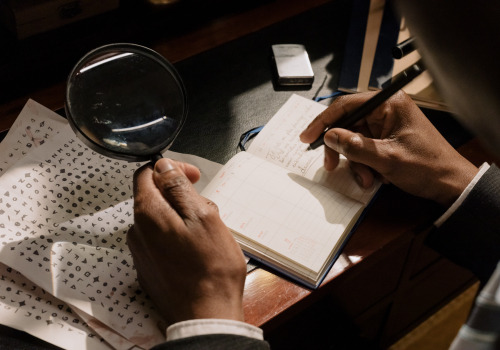
There's many parts involved when writing a scene. Knowing how these different pieces work together may help you move forward in your novel. NaNo Participant Amy de la Force offers some tips on brushing up your scene writing knowledge. Scenes are the building blocks of a novel, the stages where characters spring to life, conflicts brew and emotions run high. Mastering the art of scene writing is crucial for any aspiring writer, especially in the lead-up to NaNoWriMo. But what is a scene, and how do you effectively craft one?
What is a Scene?
A scene is a short period of time — in a set place — that moves the story forward with dramatic conflict that reveals character, generally through dialogue or action. Think of writing a scene as a mini-story with a beginning, middle and end, all contributing to the narrative.
Why Scene Writing is Your Secret Weapon in Storytelling
Well-crafted scenes enhance your story to develop characters, advance the plot, and engage readers through tension and emotion. Whether you're writing a novel, short story or even non-fiction, scenes weave the threads of your story together.
Tip #1: Scenes vs. Sequels
According to university lecturer Dwight Swain in Techniques of the Selling Writer, narrative time can be broken down into not just scenes, but sequels.
Scene
The 3 parts of a scene are:
Goal: The protagonist or point-of-view (POV) character’s objective at the start of the scene.
Conflict: For dramatic conflict, this is an equally strong combination of the character’s ‘want + obstacle’ to their goal.
Disaster: When the obstacle wins, it forces the character’s hand to act, ratcheting up tension.
Sequel
Similarly, Swain’s sequels have 3 parts:
Reaction: This is the POV character’s emotional follow-up to the previous scene’s disaster.
Dilemma: If the dramatic conflict is strong enough, each possible next step seems worse than anything the character has faced.
Decision: The scene’s goal may still apply, but the choice of action to meet it will be difficult.
Tip #2: Questions to Ask Yourself Before Writing a Scene
In Story Genius, story coach and ex–literary agent Lisa Cron lists 4 questions to guide you in scene writing:
What does my POV character go into the scene believing?
Why do they believe it?
What is my character’s goal in the scene?
What does my character expect will happen in this scene?
Tip #3: Writing Opening and Closing Scenes
Now that we know more about scene structure and character considerations, it’s time to open with a bang, or more to the point, a hook. Forget warming up and write a scene in the middle of the action or a conversation. Don’t forget to set the place and time with a vivid description or a little world-building. To end the scene, go for something that resolves the current tension, or a cliffhanger to make your scene or chapter ‘unputdownable’.
Tip #4: Mastering Tension and Pacing
A benefit to Swain’s scenes and sequels is that introspective sequels tend to balance the pace by slowing it, building tension. This pacing variation, which you can help by alternating dialogue with action or sentence lengths, offers readers the mental quiet space to rest and digest any action-packed scenes.
Tip #5: Scene Writing for Emotional Impact
For writing a scene, the top tips from master editor Sol Stein in Stein on Writing are:
Fiction evokes emotion, so make a list of the emotion(s) you want readers to feel in your scenes and work to that list.
For editing, cut scenes that don’t serve a purpose (ideally, several purposes), or make you feel bored. If you are, your reader is too.
Conclusion
From understanding the anatomy of a scene to writing your own, these tips will help elevate your scenes from good to unforgettable, so you can resonate with readers.

Amy de la Force is a YA and adult speculative fiction writer, alumna of Curtis Brown Creative's selective novel-writing program and Society of Authors member. The novel she’s querying longlisted for Voyage YA’s Spring First Chapters Contest in 2021. An Aussie expat, Amy lives in London. Check her out on Twitter, Bluesky, and on her website! Her books can be found on Amazon. Photo by cottonbro studio
#nanowrimo#writing#writing advice#scene writing#writing scenes#plotting#by nano guest#amy de la force
462 notes
·
View notes
Text

June 5
Hello writerly friends!
I prepared this post in advance, knowing that I will be a zombie today because of the concert on Tuesday night (Rise Against in Hannover! Yay!!). (And then tumblr disappeared the post and I had to do it myself anyway)
So I don't have a lot for you today, but I came across this interesting post by K.M. Weiland:
It's about a habit I have unwillingly acquired too — not trusting the reader and explaining things in dialogue that have already been explained in the descriptive text. Once you've read this post, check out the rest of the site, K.M. Weiland has amazing resources and advice for writers.
Apart from this, are you still taking your Creative Writing college class with Brandon Sanderson?
Happy learning and happy writing!
~ barbex
taglist under the cut
@aleheartilly @midnightswaltz @mareebrittenford @transman-badass @austinpetrini @finchwrites @caitlin-elias @vespaer77 @flowerprose @tryingtimi @bebewrites @daisywords @wilde-writing @narastories @fontainebleau22 @houndsofcorduff @forthesanityofstorytellers @incognitajones @arcanefeelings @ilightmytorch @soldiermom1973 @ten-cent-sleuth @quilleth @samabigailalan @meekhayl-reblog @icannotreadcursive @austinpetrini @ooooshinythings @prudereality @eye-of-the-silver-dragon @squarelyblue @cheerfulmelancholies @heniareth @akaluan @flowerprose @wildswrites @bluejay-in-write @pheita @astorythatwritesitself @tildeathiwillwrite @rhikasa @darthnell @climbinupuraorta @eclectic-like-furniture @burger-the-ham @bardic-tales @battyaboutbooksreviews @bilightningwriter-writing @tramstrams @projecthypocrisy @bebewrites @panticwritten @friendly-neighborhood-goober @narastories @daisywords @leia-organa-fics @tryingtimi @author-a-holmes @did-i-do-this-write @xforeveralonerxx @murphysscribe @friendofozma @faejilly @tales-from-nocturnaliss @spacemomnephmoreau @cedence @illegalcerebral @ltleflrt @ilightmytorch @bad-at-names-and-faces @ink-and-spite @eriquin @fractoluminescence @companionwolf @soldiermom1973 @t-lane-writes @rhoxxia @incognitajones @wayhavenots @marshvlovestv @suzteel @talesfromaurea @cozy-fish-crow @heroofshield @stray-crow @kapandherscratchpad @transannabeth @sarasa-cat @serial-chillr @remexailferous @eiluned @lazyscience @ravenpuffheadcanons @cirianne @sidekick-hero @eternal-sunflowers @cee-grice @after-the-end-times @matchingbatbites @sophellkopter @dilly-dahlying @inhurtandincomfort @avidink @violets-in-her-arms-writes @nikknamed-ink
22 notes
·
View notes
Text
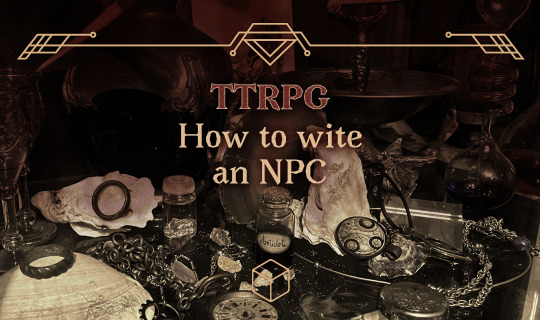
How to write a remarkable NPC for your campaign ?
Let’s say you’re writing an RPG campaign, or even a one-shot. You absolutely can have a scenario where the PCs are alone in a deserted or abandoned place, or are exploring a dungeon full of non-speaking monsters, then you won't have to ask yourself how to populate it with Non Player Characters. But there are many occasions to create NPCs, and it’s not always easy to give them remarkable personalities. There are many methods to give life to these creatures, and I’m here to suggest a few that I use.
The first thing to do is to determine the importance your NPC has in your scenario. You won’t use the same techniques if they appear for three sentences giving directions or if they’re going to help (or fight) your players for a 80 hour campaign. We’ll divide them in three categories : the Silhouettes, the Utilities and the Actors.
The Silhouettes are NPCs that only appear because you need someone present. They’re just a voice, and you know your PCs won’t meet them again. They’re the easiest to improvise, and you only need to know four things about them : their name (because you can be sure if you haven’t prepared one your players will ask for it), why are they here (no more than one sentence !), what they know (only about your scenario), and two or three adjectives about their tone.
For example : the PCs came to witness a political assembly as simple onlookers, but none among them has a background allowing them to identify the speakers. They’ll then be searching the crowd for « someone who seems to know anything about it ». So here’s the following Silhouette : Charles Abernatty, an aspiring reporter who’s writing an amateur paper about conspiracy theories, who knows the names and affiliations of every politician present, and who is bubbly and speaks fast and miiiiight be stalking some of the senators here on his free time. In a few lines the character is sufficiently developed to be used to move the plot forward.
Then come the Utilities. These NPCs will have more complex interactions with the PCs, and can come back multiple times in the scenario. For those the writing will be a little more complete. You’ll still have to find them a name of course, but also the following éléments : - a physical description - a background (one paragraph might be enough), so you’ll have in advance some elements to use in their dialogues to make them more alive - their role (what they know and what they want) : every character wants something in your scenario (whether it be to simply live a simple life, or to find the lost magic sword of their uncle, or whatever it’s your story guys). This will allow you to know their place in your story, and explain how and why they may have a recurring rôle. - the roleplay, including indications for the voice and the posture (so that you’ll be coherent from one occurrence to another) but also typical reactions (will they be protectors towards an injured PC, or disapprove the use of foul language, etc.)
As you can see, these elements are roughly the same as for a Silhouette, but way more defined.
Finally you have the Actors. These are NPCs with a pivotal role in your scenario, and who have multiple apparitions. They are written the same way as Utilities, but with two more things : - their role will be expanded, not only containing what they want and know, but also their implication at every level of their respective storyline, and may have their opinion on a few subjects - their three motivations : your Actors will have three levels of motivation. The first one is the affirmation, what the NPC will openly tell as their objective. The second is the secret, what the NPC is really after but won’t display. The third is the buried one, what the NPC doesn’t consciously know they desire but is motivated by nevertheless. For example a pirate captain may have as an affirmation to amass a fortune to afford a palace, as a secret to have enough bounty to reclaim the family house taken by an usurer, and as a buried motivation to prove themselves of value in the eyes of their family who disavowed their pirate ways. These three motivations will ease the creation of a coherent character arc for your NPC through the scenario, but also to allow them to reveal themselves to your PCs, through slips or confessions. You can also prepare for your Actors some key scenes with pre-written lines. It is not mandatory at all, and can even be problematic if it is done too often, but it can be useful if you want to use misdirection in your formulations, or if you have an NPC with a complicated way with words or a difficult accent.
With these techniques, you should have deep enough NPC to avoid the syndrome of « wait, who’s this guy again » PC reaction, while still giving your players the information you want. Well, you’ll never be immune to this, but every little bit helps ! I’ll post other tips for RPG writing, so… stay tuned !
Index
#role playing game#role playing games#rpg#tabletop roleplaying#tabletop rpgs#ttrpg#ttrpg community#indie ttrpg#writing tips#npc#tales of the grey#scalecat
52 notes
·
View notes
Note
hi, so my writing question is how to fill the space between the dialogue of a story!
i have the feeling my story is basically 80% pure dialogue and i would like to know how i can make my scenes feel more rounded.
tysm in advance btw!
Ah yes, this is called the "talking heads" problem -- two characters floating in a blank void. The answer, of course, is to bring in more description: Details of the setting, (I need to practice more of this, actually; I often forget that not everyone is envisioning it exactly as I do, LOL), body language (gestures), or interior thoughts.
Descriptions often work really well anywhere there would be a pause in conversation, because it forces the READER to slow down too. Remember that one really perfect detail is often all you need to give the illusion of depth. Like rather than describing a whole room in detail, you can do something like: "Bob the Protagonist took the squishy purple armchair by the hearth--and struggled to extricate himself from the three throw blankets that somehow immediately entangled him. The blazing heat of the fire stung his wind-chapped cheeks."
That said, there is nothing wrong per se with a scene being mostly dialogue. I myself tend to write very dialogue-heavy, and so did Alexandre Dumas, and so do lots of writers. It just depends on what the story needs, you know? If your personal voice leans towards dialogue, it is allowed to do that. (If you're still learning, I'd recommend still testing out different techniques and playing with different styles -- it pays to be flexible and adept with a range of tools!)
24 notes
·
View notes
Note
Hello. Not sure if this was asked yet, but do you have any advice on how to write enemies to friends, then friends to lovers, considering there was romantic tension between them before when they were enemies? Thank you very much in advance!
The enemies to lovers trope is a beloved narrative device, especially in the romance genre. As a creative writer looking to explore this trope, there are key elements and techniques to consider in order to craft a believable and engaging story. Here’s how you can turn animosity into affection and keep your readers hooked.
Understanding the trope
Before diving into writing, it’s important to understand what makes the ‘enemies to lovers’ trope so interesting. It’s a classic plot device where two characters start with a contentious relationship and, through various plot developments, end up falling in love. This trope thrives on tension and the gradual breakdown of barriers, creating a rollercoaster of emotions for both the characters and the readers.
What are the key components?
Conflict: The bedrock of this trope is the initial conflict between the characters. It can be rooted in a misunderstanding, ideological differences, or a rivalry.
Chemistry: Despite the conflict, there needs to be an underlying chemistry that hints at the potential for romance.
Character development: The evolution of the characters’ relationship must be believable. Their growth, both individually and together, is crucial to the plot.
Pacing: The shift from enemies to lovers should be gradual and well-paced, avoiding any rush that could undermine the build-up of their relationship.
Build authentic tension
When writing ‘enemies to lovers,’ the tension must feel authentic. Readers can easily spot forced conflict or chemistry, so it’s vital to create situations and dialogues that naturally showcase the friction between your characters.
Create obstacles: Design situations that challenge the characters and force them to interact in high-stakes scenarios.
Dialogue: Use snappy, charged dialogue to convey their conflict while also revealing their begrudging respect or fascination for each other.
Inner conflict: Develop the characters’ inner conflicts to add depth to their external quarrels and eventual reconciliation.
Have a strong turning point
The transition from enemies to lovers should feel earned. It often involves a pivotal moment where the characters’ perspectives shift, allowing them to see each other in a new light, becoming friends
Shared experiences: Design scenarios where the characters have to rely on each other, creating a sense of camaraderie.
Vulnerability: Allow the characters to show vulnerability to each other, which can be a powerful catalyst for changing emotions.
Moments of understanding: highlight moments of empathy and insight into each other’s motivations and vulnerabilities.
Foster the romance
Once the groundwork for the characters’ relationship shift has been set, you can focus on fostering the romantic connection.
Mutual respect: As the characters overcome obstacles, their respect for one another should grow, forming the basis for their romantic feelings.
Intimacy: Create instances where the characters share intimate moments or thoughts, further deepening their bond.
New Conflicts: Introduce new conflicts that can only be solved together, cementing their status as a team.
The payoff
The ultimate goal in the ‘enemies to lovers’ trope is to deliver a satisfying payoff that feels both surprising and inevitable. Here are ways to ensure the romance culminates in a fulfilling resolution:
Growth and sacrifice: Show how the characters have grown since the beginning of the story and the sacrifices they are willing to make for each other.
Full circle: Bring their relationship full circle by referencing elements of their initial conflict, now resolved through love and understanding.
Public acknowledgment: Include a scene where the characters acknowledge their feelings for each other in a significant way, often in public or in front of previously opposing forces.
#enemies to lovers#enemies to friends to lovers#writing tips#writing advice#writers#creative writing#writing#writing community#writers of tumblr#creative writers#writing inspiration#writeblr#writerblr#writblr#writers corner#tips for writers#writing quick tips#genre tropes#writing tropes#let's write#writer#writing resources#writers on tumblr#writers and poets#writing asks#writing romance#how to write#resources for writers#helping writers#help for writers
213 notes
·
View notes
Text

Herculaneum Scrolls Reveal Plato's Burial Place
Researchers used AI to decipher an ancient papyrus that includes details about where Greek philosopher is buried.
The decipherment of an ancient scroll has revealed where the Greek philosopher Plato is buried, Italian researchers suggest.
Graziano Ranocchia, a philosopher at the University of Pisa, and colleagues used artificial intelligence (AI) to decipher text preserved on charred pieces of papyrus recovered in Herculaneum, an ancient Roman town located near Pompeii, according to a translated statement from Italy's National Research Council.
Like Pompeii, Herculaneum was destroyed in A.D. 79 when Mount Vesuvius erupted, cloaking the region in ash and pyroclastic flows.
One of the scrolls carbonized by the eruption includes the writings of Philodemus of Gadara (lived circa 110 to 30 B.C.), an Epicurean philosopher who studied in Athens and later lived in Italy. This text, known as the "History of the Academy," details the academy that Plato founded in the fourth century B.C. and gives details about Plato's life, including his burial place.
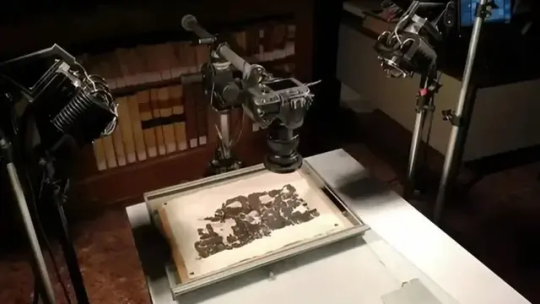
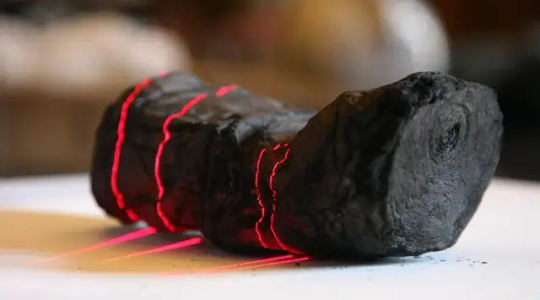
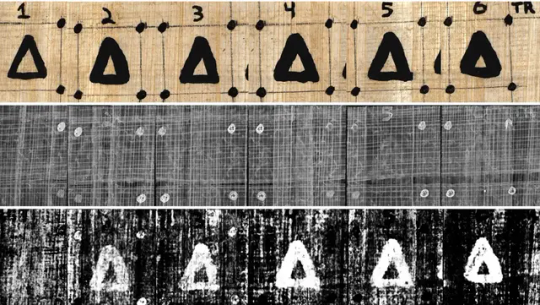

Historians already knew that Plato, the famous student of Socrates who wrote down his teacher's philosophies as well as his own, was buried at the Academy, which the Roman general Sulla destroyed in 86 B.C. But researchers weren't sure exactly where on the school's grounds that Plato, who died in Athens in 348 or 347 B.C., had been laid to rest.
However, with advances in technology, researchers were able to employ a variety of cutting-edge techniques including infrared and ultraviolet optical imaging, thermal imaging and tomography to read the ancient papyrus, which is now part of the collection at the National Library of Naples.
So far, researchers have identified 1,000 words, or roughly 30% of the text written by Philodemus.
"Among the most important news, we read that Plato was buried in the garden reserved for him (a private area intended for the Platonic school) of the Academy in Athens, near the so-called Museion or sacellum sacred to the Muses," researchers wrote in the statement. "Until now it was only known that he was buried generically in the Academy."




The text also detailed how Plato was "sold into slavery" sometime between 404 and 399 B.C. (It was previously thought that this occurred in 387 B.C.)
Another part of the translated text describes a dialogue between characters, in which Plato shows disdain for the musical and rhythmic abilities of a barbarian musician from Thrace, according to the statement.
This isn't the first time that researchers have used AI to read ancient scrolls that survived Mount Vesuvius's eruption. Earlier this year, researchers deciphered a different scroll that was charred during the volcanic eruption at a nearby villa that once belonged to Julius Caesar's father-in-law.
By Jennifer Nalewicki.
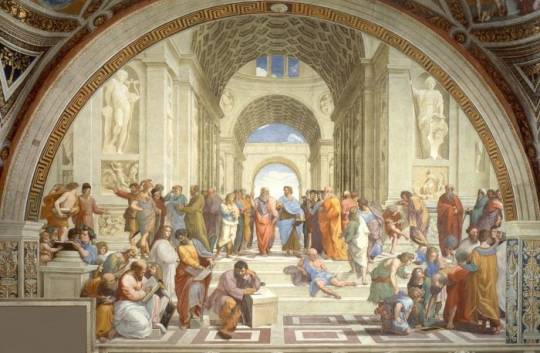

#Plato#Herculaneum Scrolls Reveal Plato's Burial Place#Herculaneum#Pompeii#Philodemus of Gadara#History of the Academy#The Academy#Plato's Academy#the Platonic Academy#the Academic School#athens greece#mount vesuvius#roman dictator sulla#ancient texts#ancient artifacts#archeology#archeolgst#history#history news#ancient history#ancient culture#ancient greece#greek history#roman history#roman empire
82 notes
·
View notes
Note
It's me again. Are there proper ways of writing fight scenes that flow well? And are there ways to make fights feel realistic without feeling like it stops the story in its tracks? How do I find the middle ground between realism and injury healing times?
Thanks for asking!
Maintaining realism in fights while keeping the story flowing smoothly is crucial for engaging storytelling. Here are some tips to achieve that balance:
Integrate fights into the narrative. Make sure that the fights serve a purpose in advancing the plot or developing the characters. They should feel like a natural progression of the story rather than an interruption.
Character motivations/stakes: Ensure that the characters involved in the fight have clear motivations and stakes. This adds depth to the conflict and makes the fight feel more meaningful to the audience.
Use variety in fight scenes. Avoid repetitive fight scenes by incorporating different fighting styles, environments, and tactics. This keeps the audience engaged and prevents the story from feeling stagnant.
Show the consequences. Realistic fights have consequences, both physical and emotional. Show the aftermath of the fight and how it impacts the characters and the story moving forward.
Balance action with other elements. Don't let the fight scenes overshadow other important aspects of the story, such as character development, dialogue, and plot progression. Maintain a balance between action and quieter moments to keep the story flowing smoothly.
Keep it concise. Avoid prolonged fight scenes that drag on unnecessarily. Focus on the key moments of the fight that are most relevant to the story and characters, and move the narrative forward efficiently.
Incorporate tension and suspense. Build tension and suspense leading up to the fight to make it feel more impactful. Use pacing, foreshadowing, and strategic placement within the story to heighten anticipation.
Make it believable. Research fighting techniques and strategies to ensure that the fight scenes are realistic and grounded in reality. Avoid overly exaggerated or implausible actions that may break immersion for the audience.
Finding the middle ground between realism and narrative pacing in injury healing times and recovery can be challenging but rewarding for maintaining both credibility and story momentum. Here are some tips:
Research: Understand typical healing times for various injuries. Medical websites, journals, and consultations with healthcare professionals can provide valuable insights.
Consider context: The severity of the injury and the overall tone of your story will influence the healing time. A minor scrape will heal quickly, while a major wound would naturally take longer.
Character abilities: Take into account your character's physical condition, age, and any supernatural or futuristic elements that could affect healing. A trained fighter might recover faster than an ordinary person, while futuristic technology or magical abilities could speed up the process.
Plot demands: Sometimes, the pace of your story might require injuries to heal faster than they would realistically. In such cases, consider adjusting the healing time while maintaining some level of believability.
Show the process: Even if you need to speed up the healing process for narrative purposes, acknowledge the injury and its effects on the character. Show them experiencing pain, discomfort, or limitations even as they recover.
Use time skips wisely: If you need to compress healing times for the sake of pacing, consider using time skips or transitions to indicate the passage of time without dwelling too much on the healing process itself.
Balance drama and realism: Strive for a balance between dramatic tension and realism. Injuries can provide opportunities for character development and conflict resolution, so consider how the healing process can contribute to the narrative arc.
Persistent effects: Even if a character's injuries are on the mend, they may not fully heal before the story's conclusion. Implementing this in your writing involves ensuring that the injury continues to affect the character in some way, whether it's physical discomfort, limited mobility, or psychological trauma.
Plot hindrance: Use the not-fully-healed injury to hinder the character's progress or add tension to the plot. For example, if the character's arm was injured in a fight, they may struggle with tasks that require the use of that arm, such as wielding a weapon or climbing.
Pain and discomfort: Continue to reference the injury after the initial healing period. Describe how the character experiences pain or discomfort, particularly in situations that aggravate the injury. This could be triggered by specific movements, weather conditions, or emotional stress.
Character growth: Show how the character copes with their lingering injury. This could lead to moments of vulnerability, resilience, or resourcefulness, allowing for further character development and depth.
For more tips on writing fight scenes, see my previous post!
Hope this helped ❤
Previous | Next
#writeblr#writing#writing tips#writing help#writing resources#creative writing#fight scenes#deception-united
115 notes
·
View notes
Text
How to write a remarkable NPC for your campaign
Let’s say you’re writing an RPG campaign, or even a one-shot. You absolutely can have a scenario where the PCs are alone in a deserted or abandoned place, or are exploring a dungeon full of non-speaking monsters, then you won't have to ask yourself how to populate it with Non-Player Characters. But there are many occasions to create NPCs, and it’s not always easy to give them remarkable personalities. There are many methods to give life to these creatures, and I’m here to suggest a few that I use.
The first thing to do is to determine the importance your NPC has in your scenario. You won’t use the same techniques if they appear for three sentences giving directions or if they’re going to help (or fight) your players for a 80 hour campaign. We’ll divide them in three categories : Silhouettes, Utilities and the Actors.
The Silhouettes are NPCs that only appear because you need someone present. They’re just a voice, and you know your PCs won’t meet them again. They’re the easiest to improvise, and you only need to know four things about them : Their name (because you can be sure if you haven’t prepared one your players will ask for it), why are they here (no more than one sentence!), what they know (only about your scenario), and two or three adjectives about their tone.
For example : the PCs came to witness a political assembly as simple onlookers, but none among them has a background allowing them to identify the speakers. They’ll then be searching the crowd for « someone who seems to know anything about it ». So here’s the following Silhouette : Charles Abernatty, an aspiring reporter who’s writing an amateur paper about conspiracy theories, who knows the names and affiliations of every politician present, and who is bubbly and speaks fast and miiiiight be stalking some of the senators here on his free time. In a few lines the character is sufficiently developed to be used to move the plot forward.
Then come the Utilities. These NPCs will have more complex interactions with the PCs, and can come back multiple times in the scenario. For those the writing will be a little more complete. You’ll still have to find them a name of course, but also the following elements : a physical description - a background (one paragraph might be enough), so you’ll have in advance some elements to use in their dialogues to make them more alive - their role (what they know and what they want) : every character wants something in your scenario (whether it be to simply live a simple life, or to find the lost magic sword of their uncle, or whatever it’s your story guys). This will allow you to know their place in your story, and explain how and why they may have a recurring rôle. - the role play, including indications for the voice and the posture (so that you’ll be coherent from one occurrence to another) but also typical reactions (will they be protectors towards an injured PC, or disapprove the use of foul language, etc.)
As you can see, these elements are roughly the same as for a Silhouette, but way more defined.
Finally you have the Actors. These are NPCs with a pivotal role in your scenario, and who have multiple apparitions. They are written the same way as Utilities, but with two more things : - their role will be expanded, not only containing what they want and know, but also their implication at every level of their respective storyline, and may have their opinion on a few subjects - their three motivations : your Actors will have three levels of motivation. The first one is the affirmation, what the NPC will openly tell as their objective. The second is the secret, what the NPC is really after but won’t display. The third is the buried one, what the NPC doesn’t consciously know they desire but is motivated by nevertheless. For example a pirate captain may have as an affirmation to amass a fortune to afford a palace, as a secret to have enough bounty to reclaim the family house taken by an usurer, and as a buried motivation to prove themselves of value in the eyes of their family who disavowed their pirate ways. These three motivations will ease the creation of a coherent character arc for your NPC through the scenario, but also to allow them to reveal themselves to your PCs, through slips or confessions. You can also prepare for your Actors some key scenes with pre-written lines. It is not mandatory at all, and can even be problematic if it is done too often, but it can be useful if you want to use misdirection in your formulations, or if you have an NPC with a complicated way with words or a difficult accent.
With these techniques, you should have deep enough NPC to avoid the syndrome of « wait, who’s this guy again » PC reaction, while still giving your players the information you want.
Well, you’ll never be immune to this, but every little bit helps!
#dnd oc#dnd5e#dnd 5e#dnd campaign#dnd art#dnd character#dungeons and dragons#dnd#cleric#half orc#writing#writeblr#ttrpg#indie ttrpg#ttrpg community#ttrpg art#pc#dungeons and drag queens#dungeons and daddies#tabletop#rpgs#dice#diy#dnd dice#polyhedral dice#magic items#character creation#original character#character design#character art
14 notes
·
View notes
Text
I failed to remember but instead I decided to recreate the "dream" theory (it was done once so presumably I can do it again).
The main point was: the only difference between modern elves and an ancient elvhen is a spirit.
(It does make sense in a way it possibly can explain the power of magic, knowledge now lost and forgotten, and longtime life close to immortality).
Some doubtful arguments:
If ancient elvhen have a connection with spirits it can explain why Cole isn't surprise to meet Fen'Harel and didn't ask any questions. It's not strange but quite normal to him and needs no explanations. In fact, Cole is far more excited about Cassandra: "Oh. That makes more sense. ... I'm a spirit that touched a body, you're a body that touched a spirit. We're the same but backwards!" because it isn't a common thing among humans.
Breach feels different for the elves. It affected them more than humans, dwarves or qunari.
One of Sera's comments is:"It just feels like I've seen this. Exactly this. It happens" and then: "Have we been here? I mean right here, doing exactly this? It feels weird" and Cole responded: "Yes. But not how you mean. In the soft thin places, spirits push with memories that didn't happen. Or did. Or might".
Another dialogue with Solas about the colour of the sky, Sera answers with: "Greenish? Then clear a long ways, and kind of...felt like falling".
Cole also said: "Pushing through (the Veil) makes you be yourself. You can hold onto the you. Being pulled through means you don't have enough you. You become what batters you, bruises your being".
And with Solas': "You are the furthest from what you were meant to be" it can be trancrypted as 'spirit whose purpose was perverted'.
Not so convincing is it? Could be a coincidence.
Enough of Sera. What about other elves?
City elves are more far from their roots than dalish. But dalish have vallaslin, so as ancient elvhen had.
Vallaslin is the blood writing. For what purposes does blood magic exist among others? Summoning demons.
Cassandra' comment: "I knew demons and spirits were similar". Solas' respond: "Not similar, Seeker. The same. ... The nature is, and always has been, grey. A spirit is a purpose. A demon is that purpose perverted".
Vallaslin is the blood mark, carved into a flesh permanently. But not in a rage or desperation and by different purposes. Dalish think it's a privilege and a tradition, Solas said it's a slave markings, but what if there's another meaning?
Could it be possible that a certain vallaslin represents a certain group of spirits? A noticeable enter sign so to speak?
Also Tevinter Imperium (famous stealers of elvhen culture and advanced enthusiasts of blood magic) using spirits as servants. Dorian asked: "Do you use spirits as servants, Solas? You'd have no trouble capturing them". Solas: "No. They are intelligent, living creatures. Binding them against their will is reprehensible". Where did Tevinter learn how to capture spirits? I suppose it could be another ancient elvhen technique they discovered once.
If vallaslin is for summoning a certain type of spirits, it presumably means each evanuris had their own type of servants depending on their goals or purpose. (Solas/Pride or Abelas/Sorrow)
We've seen Mythal. Let she be an example. The Great Protector who also can be vengeful. So.. justice and vengeance. Sound familiar.
Once again, Cassandra: "I knew demons and spirits were similar". Solas: "Not similar, Seeker. The same. ... The nature is, and always has been, grey. A spirit is a purpose. A demon is that purpose perverted".
In that case each evanuris could be a manifestation of a strongest idea/feeling. And such things as Hunger, Fear, Justice, Desire, etc can't be just removed from the world because the idea itself is strong enough. You can't just delete Fear once and for all.
Solas: "You met Mythal, did you not? The first of my people do not die so easily".
So, if the elvhen "gods" are some kind of a strongest ideas it would explain: their immortality; invincibility; the fact they didn't actually die during the time they were trapped in the Fade; their need for slaves/admirers to keep the original idea strong.
Yet Fen'Harel raised against them. As a guess, because they became too perverted from an original purpose. Went too far from the balance and it isn't supposed to be that way.
And the Veil is some kind of a try to bring the balance back. Instead, the world became a "tranquil" as Solas sees it because strong 'feelings' are gone, trapped behind the Veil and Thedas gets just an echoes of those 'feelings'.
And if the Veil will be off elves can bring back their original essence and become they meant to be. A vessels for a strong feelings/ideas having understanding and knowledge. A purpose.
So by that Solas can fulfil his original purpose: "[I believe in] cause and effect. Wisdom as its own reward, and the inherent right of all free willed people to exist".
If so there's almost zero chance to talk him down, because, firstly, he won't allow to pervert his purpose (and disapproves when Inquisitor 'perverted' Cole's purpose by making him more human), and secondly, "While the world may exert a pull in one direction or another, the choice is ultimately yours" (dialogue with Cole).

I don't know if I'm right on something or utterly wrong but anyways it was an interesting topic to speculate with.
#dragon age#dragon age the veilguard#dragon age theory#dragon age lore#dragon age evanuris#dragon age meta
38 notes
·
View notes
Text
Master Dialogue Writing Techniques for Engaging Fiction (For Writers)
(Beware, long post!)
As fiction writers, we all know that effective dialogue is essential for bringing our stories and characters to life. After all, the way our protagonists, antagonists, and supporting players speak to one another is one of the primary ways readers get to know them on a deep, intimate level. Dialogue reveals personality, uncovers motivation, and propels the narrative forward in a way that felt narration simply can't match.
But nailing natural, compelling dialogue is easier said than done. It's a craft that takes serious skill to master, requiring writers to have a keen ear for authentic speech patterns, a nimble handle on subtext and implication, and the ability to strike that delicate balance between being true to real-world conversation while also keeping things snappy, dynamic, and laser-focused on the story at hand.
If you're someone who struggles with crafting dialogue that truly sings, never fear. In this in-depth guide, I'm going to dive deep into the techniques and best practices that will help you elevate your dialogue writing to new heights. By the end, you'll have a toolbox full of strategies to ensure that every exchange between your characters is as gripping, revealing, and unforgettable as possible.
The Fundamentals of Effective Dialogue
Before we get into the more advanced nuances of dialogue writing, let's start by covering some of the foundational principles that all great fictional conversations are built upon:
Reveal Character One of the primary functions of dialogue is to give readers a window into who your characters are as people. The way they speak — their word choices, their tone, their body language, their turns of phrase — should provide vivid insight into their personalities, backgrounds, values, quirks, and emotional states.
Think about how much you can glean about someone just from how they communicate in real life. Do they use a lot of slang and shorthand? Are they verbose and flowery with their language? Do they struggle to make eye contact or fail to respond directly to questions? All of these subtle linguistic cues are powerful tools for crafting multi-dimensional characters.
Drive the Plot Forward While revelations about character are crucial, you also want to ensure that your dialogue is constantly pushing the story itself forward. Each exchange should feel purposeful, moving the narrative along by introducing new information, triggering plot points, creating conflict, or prompting characters to make pivotal decisions.
Dialogue that feels aimless or extraneous will ultimately bore readers and detract from the forward momentum of your story. Every line should have a clear intent or function, whether it's uncovering a hidden truth, setting up a future complication, or escalating the tension in a high-stakes moment.
Establish Distinct Voices In a story featuring multiple characters, it's crucial that each person has a clearly defined and differentiated way of speaking. Readers should be able to tell who's talking just from the rhythm, diction, and personality of the dialogue, without any additional context clues.
This doesn't mean every character has to have an over-the-top, hyper-stylized way of communicating. In fact, the most effective character voices often feel grounded and natural. But there should still be distinct markers — whether it's word choice, sentence structure, tone, or speech patterns — that make each person's voice instantly recognizable.
Convey Subtext While the literal words being spoken are important, great dialogue also traffics heavily in subtext — the unspoken emotional undercurrents, power dynamics, and hidden agendas that simmer beneath the surface of a conversation.
The most compelling exchanges happen when characters are communicating on multiple levels simultaneously. Perhaps they're saying one thing out loud while their body language and tone convey a completely different sentiment. Or maybe they're engaged in a subtle war of wits, trading verbal jabs that reveal deeper wells of resentment, attraction, or vulnerability.
Mastering the art of subtext is key to creating dialogue that feels layered, lifelike, and imbued with dramatic tension.
Strategies for Writing Snappy, Realistic Dialogue
Now that we've covered the foundational principles, let's dive into some specific techniques and best practices that will take your dialogue writing to the next level:
Omit Unnecessary Details One of the biggest mistakes many writers make with dialogue is bogging it down with too much extraneous information. In real life, people rarely speak in perfectly composed, grammatically correct full sentences. We stumble over our words, interrupt each other, trail off mid-thought, and pack our speech with filler words like "um," "uh," and "you know."
While you don't want to go overboard with mimicking that messiness, you should aim to strip your dialogue of any overly formal or expository language. Stick to the essentials — the core thoughts, feelings, and information being exchanged — and let the subtext and character voices do the heavy lifting. Your readers will fill in the gaps and appreciate the authenticity.
Master the Art of Subtext As mentioned earlier, crafting dialogue that's rich in subtext is one of the keys to making it feel gripping and lifelike. Think about how much is often left unsaid in real-world conversations, with people dancing around sensitive topics, conveying hidden agendas, or engaging in subtle power struggles.
To layer that sense of unspoken tension into your own dialogue, consider techniques like:
• Having characters contradict themselves or say one thing while their body language says another
• Utilizing loaded pauses, interruptions, and moments of uncomfortable silence
• Injecting subtle sarcasm, skepticism, or implication into a character's word choices
• Allowing characters to talk past each other, missing the unspoken point of what the other person is really saying
The more you can imbue your dialogue with that layered, emotionally-charged subtext, the more it will resonate with readers on a deeper level.
Establish Distinct Voices As mentioned earlier, ensuring that each of your characters has a clearly defined and differentiated speaking voice is crucial for great dialogue. But how exactly do you go about accomplishing that?
One effective strategy is to give each person a unique set of verbal tics, idioms, or speech patterns. Maybe one character is prone to long-winded, flowery metaphors, while another speaks in clipped, efficiency-minded sentences. Perhaps your protagonist has a habit of ending statements with questioning upticks, while the sarcastic best friend always punctuates their barbs with an eye roll.
You can also play with differences in diction, syntax, and even accent/dialect to further distinguish how your characters communicate. The key is to really get to know the unique personality, background, and psychology of each person — then let those elements shine through in how they express themselves.
Lean Into Conflict and Confrontation When it comes to crafting gripping dialogue, conflict is your friend. The most compelling exchanges often arise from characters butting heads, engaging in verbal sparring matches, or working through deep-seated tensions and disagreements.
Conflict allows you to showcase the high stakes, unresolved needs, and deeper emotional currents that are driving your characters. It forces them to make bold choices, reveals aspects of their personalities that might not otherwise surface, and generates the kind of dramatic tension that will really hook your readers.
Of course, you'll want to avoid making every single dialogue scene a full-blown argument. But learning to sprinkle in well-placed moments of friction, confrontation, and clashing agendas is a surefire way to elevate the energy and impact of your character interactions.
Read Your Dialogue Out Loud One of the most valuable tricks for ensuring your dialogue sounds natural and lifelike is to read it aloud as you're writing. Hearing the words out loud will quickly expose any clunky phrasing, overly formal grammar, or inauthentic rhythms that would otherwise go unnoticed on the page.
Pay close attention to how the dialogue rolls off your tongue. Does it have a smooth, conversational flow? Or does it feel stilted and unnatural? Are your characters' unique voices shining through clearly? Are there any spots where the back-and-forth starts to drag or feel repetitive?
Actively listening to your dialogue — and making adjustments based on how it sounds in the real world — is an essential part of the writing process. It's one of the best ways to refine and polish those character interactions until they feel truly alive.
Hopefully, this can help you all!
The key is to always keep your focus on authenticity. Ask yourself: how would real people actually speak?
Hey fellow writers! I'm super excited to share that I've just launched a Tumblr community. I'm inviting all of you to join my community. All you have to do is fill out this Google form, and I'll personally send you an invitation to join the Write Right Society on Tumblr! Can't wait to see your posts!

#writing#thewriteadviceforwriters#writeblr#creative writing#writing tips#on writing#writers block#how to write#writers and poets#writers on tumblr#authoradvice#author#fiction#indie author#writer#publishing#book writing#book quote#bookblr#books#writing advice#fiction writing#writing blog#writing tools#writing resources#novel writing#writer community#fantasy novel#readers#reading
884 notes
·
View notes
Note
Hi. I love your fanfic us amongst the living. I think you really have Katniss and Peeta in character. How easy do you find writing them as in staying in character with who they are and showing how they will be different after they have gone through?
hi!! thank you so much!! i apologize in advance that this is so long. i’ve spent the last two weeks legal writing which has sucked all the joy out of words for me, so i’m starved for an ounce of creativity. please bear with me. your message means a lot, especially because the main purpose for me of writing the fic was to work on my characterization. i won’t say it’s easy, but i have my system down at this point. it’s different for katniss and for peeta (as well as the other characters), because katniss is the narrator. my approach is designed to get myself inside her head. i have two techniques i use for that.
first, i think about how she feels about whatever she’s doing and why. for example, i personally don’t hunt, and have no desire to. i’m more of an indoor person than an outdoor person, so i can’t understand the solace being out in the woods brings her. i grew up in a sunny, humid, beachy climate, so my connection to nature looks and feels entirely different.
but i do love sea glass hunting, so i focus on what it feels like to be barefoot on the beach, no noise, just the sound of seagulls and water crashing to the shore. it doesn’t matter if it’s bone-chilling cold or suffocatingly hot. to dig in the rocks or the sand for different pieces big and small, usually green or white or brown, but if i’m lucky, sometimes i’ll find a deep blue or a piece of pottery. once, i even got a little red one. the weather and terrain tell me everything i need to know about what i will find. some days are better than others. sometimes i come up empty, but other times i’m pleasantly surprised. it’s so frustrating to find a gorgeous piece and have it slip between my fingers. it’s worth it, though, because of the quiet moments i get to spend with a friend, the love of my life, or even alone, with just the seagulls as company. using that as my base, it’s easy to convert my experiences into katniss’.
the second thing i do is to process the story in katniss’ voice. this tactic is a lot more practical. i love audiobooks, and i must have listened to tatiana’s reading of the trilogy about a thousand times by now. katniss’ voice is very, very clear in my head. so if the dialogue i’m writing for her doesn’t sound right in her voice, she shouldn’t be saying it.
i relate to peeta more palpably, possibly because the struggles he faced through his childhood are a lot more comprehensible to me. we share some talents, but just as many flaws. and because we don’t know the post-hijacking peeta, i feel a lot more free to characterize him as the boy i fell in love with when i was a little girl reading the books for the first time. except, all grown up. so he looks and sounds like my fiancé, really.
but, as you indicated, keeping them true to the characters we know and love as they change adds its own challenges. so i spend a lot of time thinking through each of their actions in the trilogy. i put myself in their positions and see how my gut tells me i would react, and think about what makes me different and what makes me the same. the more i get to know why they act the way they do, the more i can draw on how they’ve acted in the past. in the end, it’s just pattern recognition, with a little deference to the human condition known as hypocrisy.
at first, it was pretty easy. the pattern was so clear to me by the time i sat down to write. but the further i got into my story, the harder it was to hear their voices. and i realized it’s because i’m no longer simply continuing the patterns from suzanne’s writing. i’m pulling from my own now, too. and that means trusting the patterns i’ve created. which is a lot easier said than done.
the last thing i’ll say in this response which is likely about eight times the length of what you expected (but if you like my writing you know brevity is not my strong suit) is that after i took a break of several months, i went back to the trilogy and reread. when i finished reading the hunger games, i texted a friend about how wrong i’d gotten katniss. she assured me it wasn’t true and i kept reading, convinced i messed it all up. but by the time i finished mockingjay and started my reread of uatl, i understood once again why i’d written what i wrote. i pondered every single character choice i made, and agreed with the logic for almost all of them. and it’s because katniss grew a lot in three books. 16 year old katniss is astoundingly different from 17 year old katniss. so 18 year old katniss, will be, too.
#i really am sorry this is so long#i appreciate the excuse to verbalize the process#god this felt good#to care about characters more than specific word choice#thank you so much for the ask#the hunger games#thg#katniss everdeen#peeta mellark#everlark#hunger games fanfiction#everlark fanfiction#fanfiction#us among the living#ask answered#anon ask#anonymous
10 notes
·
View notes
Text
Foreshadowing (1)
Foreshadowing is a literary technique in which an author hints at or suggests what will happen later in a story. It is a way for the author to build anticipation and create tension, as well as to add depth and complexity to the plot and characters.
Foreshadowing can take many forms, such as a character's actions or words, an object or setting that has symbolic significance, or even a seemingly random event that later turns out to be important.
For example, in the opening scene of William Shakespeare's play "Macbeth," the witches' prophecies foreshadow the tragic events that will unfold later in the story. Similarly, in J.K. Rowling's "Harry Potter" series, various clues and hints are dropped throughout the books that foreshadow the ultimate defeat of the villainous Lord Voldemort.
There are several types of foreshadowing that authors can use to hint at future events in their stories:
Character Foreshadowing: This is when a character's actions, thoughts, or words hint at something that will happen later in the story. For example, a character who is always talking about their fear of water might foreshadow a future scene where they have to swim across a river.
Symbolic Foreshadowing: This is when an object or setting that has symbolic significance hints at something that will happen later in the story. For example, a broken mirror might foreshadow bad luck or a fractured relationship.
Dialogue Foreshadowing: This is when dialogue between characters hints at something that will happen later in the story. For example, if a character says "I have a bad feeling about this," it might foreshadow a dangerous situation.
Plot Foreshadowing: This is when the plot itself hints at future events. For example, the start of a mystery novel might foreshadow the revelation of a killer.
Title Foreshadowing: This is when the title of the story itself hints at future events. For example, the title "The Death of Ivan Ilyich" foreshadows the death of the protagonist.
Foreshadowing can be a tricky technique to get right. Give away too little, and you may confuse readers or lose their interest. Give away too much, and you take away your story’s suspense. Here are some tips for using foreshadowing effectively in your writing:
Plan ahead: Foreshadowing works best when it is planned in advance. Before you start writing, think about the key events in your story and how you can hint at them earlier in the narrative.
Be subtle: Foreshadowing should be subtle enough that readers don't immediately guess what will happen. Use small hints and clues that can be interpreted in multiple ways.
Use multiple types of foreshadowing: Don't rely on just one type of foreshadowing. Use a combination of foreshadowings to create a rich and complex narrative.
Don't overdo it: Too much foreshadowing can be distracting and annoying for readers. Use foreshadowing sparingly and only when it serves a purpose in the story.
Keep it relevant: Foreshadowing should always be relevant to the story. Don't include hints that never pay off or that are unrelated to the plot.
Use foreshadowing to create tension: Foreshadowing can be used to create tension and suspense in your narrative. By hinting at future events, you can keep readers engaged and eager to find out what happens next.
Pay off the foreshadowing: Foreshadowing is only effective if it pays off in the story. Make sure that the events you hint at actually happen later in the narrative, and that they have a significant impact on the plot or characters.
Foreshadowing is a common and effectively way to make your stories more exciting. By using foreshadowing, authors can create a sense of inevitability and give readers a sense of satisfaction when events come to fruition as predicted. It can also make the story feel more cohesive and well-planned, as if everything was leading up to the climactic moment.
If you want to read more posts about writing, please click here and give me a follow!

#creative writing#writing#writeblr#writerscommunity#writer things#writers#writersociety#on writing#writers block#writer problems#writblr#writerslife#writerscorner#ao3 writer#fanfic writer#writersofinstagram#amwriting#writers on tumblr#writing tips#writing community#write#technical writing#techniques#foreshadowing
141 notes
·
View notes
Note
Please go into detail about the feld computers
Okay so! We get quite a bit of information about the Feld Playback Experiment, a lot more than I realized before writing this post. The interface of the game (menus, dialogue engine) is actually designed to look like its on a Feld computer. Plenty of other people have talked about that, so I'm not going to go into it here, but I will drop this archived post from the developer's blog for those who are interested.
One thing I do want to highlight from that post:
This computer uses long strips of film for feedback (projection), memory (storing on magnetic tape) and interfacing (submit commands in handwriting) purposes
The strips of film for feedback and the magnetic tape storage are what I was expecting. But using handwritten commands for input was not on my radar! This would be what's called offline handwriting recognition, where text is converted by the computer after it's written (as opposed to online, where you use something like a stylus on a screen and the computer interprets it as you're writing). This is comparatively pretty difficult to achieve, and very error-prone, as everyone's handwriting looks slightly different. Most modern versions of this use machine learning techniques, but I'm assuming these computers used very basic character extraction and recognition engines.
Trant is the only in-game source we get for the Feld computers. And after doing some digging I found him saying something similar:
"As I was saying, the device itself was very elegant, fragile even. One could write directly on the tape using a special chemical solution. The machine would then analyze the handwriting, perform operations and project output onto a white screen. It was a beautiful, delicate thing."
I initially interpreted him saying they "perform operations and project output" to mean that they can process internally, unlike radiocomputers. But this post from the developers is making me think otherwise (thanks @sollandan for sharing this on my other post!):
"These machines have on-air processing. Large prime number stations criss-cross the air. Advanced tape computers use arrays of antennas to sieve through their calculations to perform advanced calculus on site: to run programmes and communicate between the remote corners of the world."
The advanced tape computers being referred to here have to be the Feld computers. I'm still not sure how this kind of processing would work. As far as computing goes, prime numbers are used primarily in cryptography. Maybe their version of 'processing' somehow involves decrypting? People have theorized that the world in Disco Elysium is made of information. If all the information already exists, maybe it's just a matter of decoding it? I'm honestly just spitballing here, but I'd love to hear other people's theories.
Regardless of how they work, it seems pretty clear to me that the Feld computers are meant to parallel the rise of digital personal computers in our world. Like how Trant described them here:
"An elegant folding mechanism of rollers and ferrotape ribbons, portable enough to be a take-it-home solution, revolutionizing business machines, possibly even bringing them to the average consumer."
This reads almost exactly like promotional material for early home computers made by IBM, Apple and such. (Side note: 'ferrotape' here refers to ferric-oxide coated tape, used for magnetic tape storage and popularized for use in computers by IBM in the 50s.)
But in Disco Elysium, this revolution never took place. Computers never made it to the average consumer, as is clearly demonstrated by even the RCM having only limited access to radiocomputers. The only characters I know of with access to computers are Soona (obviously) and Trant (plus his kid), who seems to be much wealthier than the average citizen of Revachol. The thematic significance of this form of communication never becoming available to the masses is not lost on me.
That said, I think ending this on one of the most interesting hints we get on what happened to the Feld Playback Experiment is appropriate:
YOU - "Why did the revolutionaries destroy it?" TRANT HEIDELSTAM - "Who knows? Maybe it was an accident, or maybe they didn't want the technology to end up in the wrong hands. Either way -- they're all gone now, all three versions of the prototype. Nothing but debris and ashes remains inside that building." He takes a step back; the boardwalk creaks mournfully in the wind. SHIVERS - Two seagulls circle in the sky. You look up and think: really? Or was there a fourth prototype that remains hidden in the mausoleums below Coal City?
#thanks for asking!!#this was a great excuse to spend way too much time researching fake computers#and again i'd love to hear other people's thoughts!!#cyan.txt#disco elysium
67 notes
·
View notes